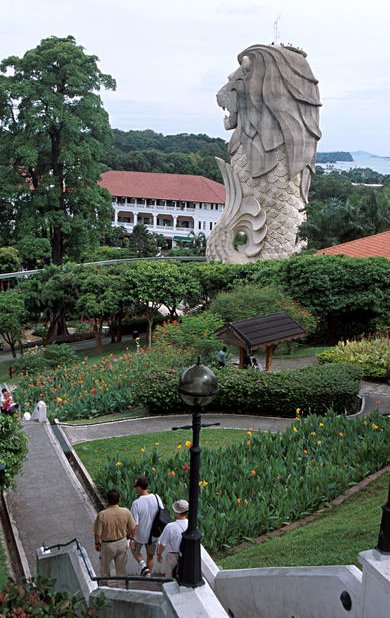|
||||||
|
Where To go
China Town
Origin Just behind the soaring skyscrapers of Singapore's financial district lies Chinatown. Bound by Upper Pickering Street, Cantonment Road, New Bridge Road and South Bridge Road, this crowded and colorful network of streets and alleyways has changed little over the decades. Here, Chinese merchants engage in business from the ground floor of quaint pre-war shophouses much as they have for generations.
Singapore's Chinatown evolved around 1821 when the first Chinese junk arrived from Xiamen, Fujian province in China. The passengers, all men, set up home around the south of the Singapore River which is known today as Telok Ayer.
Chinatown is also known as "Niu Che Shui" in Chinese. The literal translation means "bullock cart water". In the past, conditions were harsh and the only source of fresh water was from the many wells in Ann Siang Hill and at Spring Street. Each household had to collect fresh water in bullock-drawn carts, hence Chinatown's local name - Niu Che Shui - which locals still refer to today. |
|
|
Chinatown Today Chinatown can be divided into four main districts - Kreta Ayer, Telok Ayer, Tanjong Pagar and Bukit Pasoh - each with a distinctive flavor of its own. The heart of activity is in the Trengganu / Smith Streets area. Experience the sights and sounds of Chinatown: medicine stores mix snake skin, herbs and spices and other exotic ingredients into potions for all ailments; traditional delicacies like sea cucumbers lie drying in the street; fruit sellers squat near mounds of rambutan, strong-smelling durian, mangosteen and other seasonal fruits; fortune-tellers sit at make-shift tables waiting for eager customers to know their future; hawkers grill thin slices of pork for passers-by over home-made barbecues. Here, bargains abound from beautifully embroidered kimonos, gold jewelry and T-shirts to pottery and traditional crafts at delightfully hard-to-believe prices.
Try the Tanjong Pagar area for traditional teashops, clog and kite makers, painted masks, waxed paper umbrellas, lacquerware from China, handicrafts and artifacts from all over Asia. Then wander over to Smith Street, Trengganu Street, Temple Street and Pagoda Street where the streets are at their narrowest and you'll find some of the best bargains. The modern face of Chinatown shopping can be found in the area around the junction of Cross Street with New Bridge Road and Eu Tong Seng Street. The large shopping complexes here, such as Chinatown Point, Yue Hwa, People's Park Complex and Chinatown Complex, are not only good sources for Chinese products but also offer bargains galore in their extensive ranges of more conventional products. Look here for everything from electrical and electronic goods, luggage and textiles to bargain-priced clothes and cosmetics. A wide selection of local crafts is available at the Singapore Handicraft Centre in Chinatown Point.
Singapore's Chinatown is full of contrasts and fascinating details. Parts of Chinatown aren't even Chinese! Witness, for example, the Nagore Durgha Shrine and Al Abrar Mosque along Telok Ayer Street, and the Jamae Mosque and Sri Mariamman Temple along South Bridge Road. The peaceful co-existence of the worshipping places of different religions in the same area reflects the racial and religious harmony in Singapore.
Best Time To Visit One of the best times to visit Chinatown is just before Chinese New Year, when the streets come alive with special festive decorations and illuminations, and throb with drumbeats of lion dances and Chinese opera performances. Colorful stands sell everything from Barbecued Pork to hong baos, red envelopes used to give money away as presents during this time of celebration.
Getting There A short walk from Outram Park MRT Station. |
|


